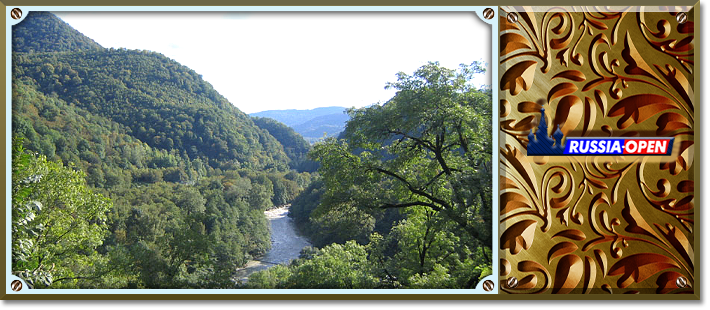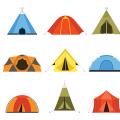"Prielbrusye" - national park, was formed on September 22, 1986 in order to preserve the unique natural complex of the Elbrus region and create conditions for the development organized recreation/tourism and mountaineering. The territory of the national park is located in the region of the Central Caucasus, the mid-mountain and high-mountain zone (1400-5642 m above sea level), includes part of the Main Caucasian and Lateral ridges. Within the boundaries of the national park, several morphological forms of relief are distinguished: high-mountain-glacial, medium-altitude mountain relief, lava flows, lacustrine-hollow.
Fauna
The fauna of the national park is rich and includes 63 species of mammals, 111 species of birds, 11 species of reptiles, 8 species of amphibians, 6 species of fish and a huge number of insect species.
The national park is inhabited by animals of both European broad-leaved forests - pine marten, European forest cat, brown bear, roe deer, many birds, and the steppe zone of Europe - common mole rat, common hamster, steppe polecat, gray partridge, etc. Among the endemic species of the Caucasus is the West Caucasian tur (lat. Capra caucasica), Caucasian snowcock (lat. Tetraogallus caucasicus), Caucasian black grouse (lat. Lyrurus mlokosiewiczi), Caucasian otter (lat. Lutra lutra meridionalis) and others. Caucasian tur (lat. Capra caucasica).
Among mammals, as interesting species living in the park, it should be noted chamois, among fish - brook trout (lat. Salmo trutta morpha fario). There are many endemic forms among insects. So, out of 63 species of diurnal butterflies, 20 species are found only in the Elbrus region.
Flora
The exceptional diversity of relief, temperature, moisture, soils contribute to the development of a wide variety of landscapes. The disunity of individual gorges and basins contributes to the formation of endemic and the preservation of relict species. The nature of the park is characterized by a combination in the animal and plant world of species typical of the steppe, Mediterranean regions of Western Asia.
The vertical zonality of the climate determines the vertical zonality of the vegetation cover. The main belt types of vegetation of the national park are: nival, subnival, alpine subalpine, mountain-forest and mountain-steppe.
Meadows are the predominant type of vegetation cover. A powerful belt of coniferous forests is replaced by a narrow strip of woody and shrubby woodlands, which gradually turn into a belt of subalpine, and then alpine meadows. The latter directly adjoin the snowfields and firn fields.
The flora of flowering and higher vascular plants of Kabardino-Balkaria includes about 3000 species, which is 50% of the species growing in the Caucasus as a whole. The most attractive are alpine and subalpine meadows with a grass stand height of 8-15 cm and from 40-50 to 70-80 cm, respectively.

Among the rare plants there are many endemics of the Caucasus: Nefedov's bell (lat. Campanula nefedovii), small chickpea (lat. Cicer minutum), Baksan wolfberry (lat. Daphne baksanica), single-brotherly lily (lat. Lilium monadelphum), Dinnik's saxifrage (lat. Saxifraga diimikii ), amazing cinquefoil (lat. Potentilla divina), Olympic catchment (lat. Aquilegia olympica), Albanian backache (lat. Pulsatilla albana), dolomite bellflower (lat. Campanula dolomitica), etc.
A specially protected species of the mountain-meadow subalpine landscape is the Caucasian rhododendron (lat. Rhododendron caucasicum) - an evergreen shrub from the heather family.

Tourism
There are 23 recreational facilities on the territory of the national park, where about 5 thousand people can relax during the season. Planned tourism is mainly carried out under the auspices of the Elbrus Council for Tourism and Excursions.
Excursions are conducted on 16 thematic routes. The main objects of bus excursions are the Narzanov Glade (as well as the Narzanov Valley (hiking)), Cheget, Elbrus.
Parks / Kabardino-Balkar Republic
The Elbrus region today is one of the most significant mountain monuments nature of the Caucasus. This is an area of unique landscape, where the mountains have become a cradle and a haven for many species of plants and animals, and to preserve it is an integral task of the state. For this purpose, on September 22, 1986, the Elbrus National Park was created here. The director of the park M.A. Bekkaev. The park is located in the mid-mountain and high-mountain zones of the Lateral and Main Ranges of the Central Caucasus, on the territories of two administrative regions of the KBR - Elbrussky and Zolsky. Its total area is more than one hundred thousand hectares. 62 percent of it falls on hard-to-reach terrain: rocks, glaciers, snow fields. As for the flora and fauna, it also has its own characteristics. Mount Elbrus, whose peaks are covered with solid firn (dense granular snow) and ice caps, serves as a powerful refrigerator that dries up the surroundings. Therefore, spruce and fir, which love moisture, do not grow in the Elbrus region, but pine, birch, aspen and some other deciduous plant species predominate. The main type of vegetation cover is meadows. And the slopes of the mountains are covered with a dark green carpet of rhododendrons, whose pink and white flowers bloom every summer. Last year, on the territory of the Verkhnemalkinsky forestry, such a forest-forming crop as birch was planted on an area of ten hectares in the upper reaches of the Malka River. Previously planted forests have been supplemented: in Verkhnemalkinsky forestry - birch on two hectares, in Verkhnebaksansky forestry - pine on three hectares. 59 thousand units of planting material were excavated and used in our National Park, and the forest was also cleared of deadwood and debris. Twelve hectares of dead wood were removed in the Elbrus forestry (Yusengi gorge). After laying the gas pipeline, we removed forty trucks of waste, although the gas workers themselves had to do this. It remains to remove a small area in the area of the village. Baydaevka. But all this activity would not make sense if the unique natural complexes of the Elbrus region were not protected by the relevant service of the National Park. To preserve natural ecosystems and their components, forestry, reforestation, biotechnical and other specialized activities are carried out. On our initiative, sharply reduced by the Ministry natural resources Russia sanitary felling care. If earlier up to a thousand cubic meters of forest were cut down, then in 2003 for the first time fellings amounted to 300 cubic meters. In the same range, this figure will remain this year, and in the future will be reduced to a minimum. Only diseased and overmature trees are removed. The park IS a national property and is a specially protected area. In order to ensure compliance with the established regime here, we have created a special service consisting of state security inspectors. They are given great rights by law. Since, according to the regulations, the Elbrus National Park is the sole owner within its borders, with the entrustment of state control functions for the protection of flora, fauna, soil, land resources. Protection work is carried out by employees of three forestries - Elbrussky, Verkhnebaksansky and Verkhnemalkinsky - they are state inspectors. These are foresters, twenty-three foresters and five rangers. The Jaeger Service also carries out biotechnical measures to preserve and increase the number of wild animals. Salt licks for tours and chamois are being installed. Stray dogs are shot, as they cause great damage to nature, in particular, during nesting birds, and young wild animals. The National Park has a permanent task force on a special vehicle with the involvement of representatives of the Ministry of Internal Affairs. This is especially important during the hunting season - from September 1 to January 15. In the pre-New Year period, round-the-clock patrols were carried out, especially in places where pine young growth grows. New Year trees (pines) were not cut down in order to sell them to the population. Only a few trees were cut down for schools and preschool children's institutions according to the order of the administration of the Elbrus region. In the future, in order to protect the territory of the National Park, we want to introduce patrols on horseback. This will be more efficient, as access to high-altitude forest areas is difficult for vehicles. The main task is to preserve and restore the unique natural complex "Prielbrusye" and create conditions for the full regulation of tourism and sightseeing holiday. To solve it, we need to develop scientific foundations and practical measures to maintain the biological balance of the biosphere and improve the rational use of its resources based on modern knowledge. The most important task of the park is to create conditions for regulated tourism, mountaineering and recreation in natural conditions. We have created a department of tourism and environmental education, a scientific department. The first of them is responsible for organizing competitive bidding for leasing land plots, ensuring regulated tourism and recreation. These types of activities are exclusively licensed by the National Park for all organizations located on our territory. Unfortunately, not all managers have understood the need to obtain licenses. At present, only Elbrusturist OJSC and the recreation and sports center of MSTU Dzhantugan have undergone this procedure. To this end, we have created a department of environmental education and tourism. Now we are carrying out preparatory work on the organization of tourist routes, the selection of experienced guides. In a word, we are going to unwind this business. But, of course, the funds earned in any case will not be enough to solve global problems. Not without government support. In previous years, starting from 1995, the National Park also issued licenses and signed contracts for the lease of land. But this was contrary to legislative and by-laws. Therefore, the Elbrus District Court, at the initiative of the prosecutor's office, protested the leasing of almost all plots, except for two. Now this work is carried out strictly according to the established rules. Passportization and improvement of seventeen tourist routes are being carried out, and the five most popular ones have already been mastered: in the gorges of Adyr-Su, Adyl-Su, Irik-Chat, Yusengi, on the slopes of Mount Elbrus. The arrangement of six picnic areas has already been selected and has already begun: in the area of the village. Neutrino, at the entrance to the Yusengi gorge, in the Cheget glade (on the territory of the former tent city), on the territory of TsVTB "Terskol" (on the banks of the Azau River), near the village of Baidayevka and below the Azau glade. This will make it possible to regulate tourist flows, reduce recreational pressure in the most popular recreation areas, and rationally and civilly use natural objects. Sixty-three species of mammals, one hundred and eleven species of birds, eleven species of reptiles, aquatics, six species of fish and a large number of insects live in the park. It is the center of distribution of the tur, or Caucasian goat, which seems to be one of the ancient relics. There are also chamois. Animals of European forests are widely represented: brown bears, wild boars, foxes, squirrels, martens, wolves. There are also those that are listed in the Red Book. This is a Caucasian otter and a giant evening otter. And besides, it lists six species of birds: Caucasian black grouse, saker falcon, golden eagle, Caucasian peregrine falcon and bearded vulture, two species of serpentine - Caucasian viper and Asia Minor newt. I would like to take this opportunity to point out legal features The national park, because the Elbrus region is open to everyone and it would not hurt every visitor to know them. In accordance with the regulation on the park, a differentiated protection regime is established. Five functional zones have been allocated throughout its territory: a specially protected reserve, educational tourism, recreational use and a zone for economic purposes. The first of them is intended for the protection of especially valuable areas in need of restoration (only scientific observations are allowed there). The second one is allocated in order to provide conditions for the conservation of natural complexes and objects. Visiting is strictly regulated on its territory. The third zone serves for land plots, buildings and structures in the territories national parks to carry out activities to ensure environmental education and familiarization with places of interest. The recreational use zone covers the entire area of the park, while the economic zone is intended for carrying out the activities necessary to ensure its functioning. It must be borne in mind that, according to the legislation, land, water, subsoil, plant and animal world located on the territory of the National Park are provided for its use (possession). Any activity that can damage natural complexes is prohibited here, and there should be only one type of land relations - rent. We carried out appropriate explanatory and other work to conclude contracts with organizations located in the park. But, unfortunately, entrepreneurs do not yet show due activity in the matter of concluding lease agreements for forest fund lands. Meanwhile, a commission specially created in our country considers incoming applications quite promptly, and, as a rule, positive decisions are made on them. Our team has enough strength to ensure the protection of natural resources, the preservation of the unique flora and fauna of the park. However, poor funding prevents high level carry out research work, without which it is impossible to achieve proper reproduction and rational use of natural resources. In addition, to solve this problem, it is necessary to involve specialists from higher educational institutions and scientific organizations.
The Elbrus region attracts to its region everyone who wants to see Mount Elbrus with snowy peaks and extraordinary beauty gorges. Picturesque landscapes, clean, fresh air, healing springs mineral water- all these uniquenesses are here in large numbers.
Geographically, it is located in the part of the Main Caucasian Range and the Lateral. The most famous and visited object in these parts is the majestic Elbrus with its very high point Russia - 5642 meters above sea level. On top of this extinct volcano you can see the remains of sulfur dioxide emissions. Such secretions usually indicate that volcanic activity has not yet completely died out and the volcano is still capable of erupting. In addition to such sulfurous secretions, traces of lava flows remained. For example, in the valley of the Malka River, it is 23 kilometers. If we take the entire National Park as a whole, then glaciers and snow-covered surfaces make up 15% of the entire territory.
Also on the territory of the Elbrus Park there are more than a hundred deposits mineral springs, as well as a large number of beautiful and unusual lakes, such as blue Lake, Syltranköl and others. Turning to travel agencies for a tour to the Caucasus, you can always organize excursions to beautiful and picturesque places.
In addition, the nature of the park is rich in waterfalls, of which the most famous and beautiful are "Sultan", "Girl's Braids" and many others.
In addition to the multiple beauties of nature in the Elbrus National Park, there are a huge number of other places of interest that are worth seeing. Undoubtedly, it is primarily natural monuments- lakes, waterfalls, gorges. Also in the valleys Caucasus mountains there are also historical monuments in the form of the remains of residential buildings of ancient times, erected monuments, memorial plaques, museums, historical burials. At the entrance to the National Park, a historical and cultural zone is organized, where a huge number of excursions and tourist routes are provided. There are also various workshops with folk crafts.
When visiting the Elbrus region for the purpose of skiing, you can also organize a visit to the astronomical observatory, as well as to the museum of glaciology of the educational base of Moscow State University.
The Elbrus National Park was organized in 1986, on September 22. The main purpose of its creation is to preserve the unique natural complex Elbrus region, as well as create conditions for organized mountaineering and recreation.

The protected area is located in the high and mid-mountain zone, in the region of the Central Caucasus. The park contains part of the Lateral and Main Caucasian Ranges. Within the boundaries of the Elbrus Park, several morphological relief forms can be distinguished: lacustrine-hollow, lava flows, medium-altitude mountain, high-mountain-glacial relief.
VEGETABLE WORLD
The vertical zonality of the vegetation cover is due to the vertical zonality of the climate. The main belt types of vegetation of the Elbrus Park include the following: mountain-steppe, mountain-forest, alpine subalpine, subnival, nival. The predominant type of vegetation cover is meadows.

The belt of coniferous forests is replaced by a narrow strip of woody-shrub woodlands, gradually turning into a belt of subalpine and alpine meadows. At the same time, alpine meadows are directly adjacent to firn fields and snowfields. The flora of higher vascular plants and flowering plants of Kabardino-Balkaria is represented by approximately 3000 species - 50% of the species that grow in the Caucasus in general. The most attractive are subalpine and alpine meadows with grass heights from 40−50 to 70−80 cm and 8−15 cm, respectively.
Among the rare plants there are a fairly large number of endemics of the Caucasus: dolomite bellflower, Albanian lumbago, Olympic catchment, amazing cinquefoil, Dinnik's saxifrage, odnofraternal lily, Baksan wolfberry, small chickpea, Nefedov's bell and others. Caucasian rhododendron, a shrub from the heather family, is a specially protected species of the subalpine mountain meadow landscape.

ANIMAL WORLD
The fauna of the national park is rich - it has 6 species of fish, 8 species of amphibians, 11 species of reptiles, 111 species of birds, 63 species of mammals, as well as many species of insects.
In the park you can see animals of European broad-leaved forests, which include roe deer, brown bear, forest cat, pine marten, and animals of the steppe zone - gray partridge, steppe polecat, common hamster, common mole rat. Among the Caucasian endemics there are the Caucasian otter, the Caucasian snowcock, the West Caucasian tour, the Caucasian black grouse and others. In accordance with the data of the 1995 survey, up to 4,600 individuals of the Caucasian tur live on the lands of the Elbrus Park.




